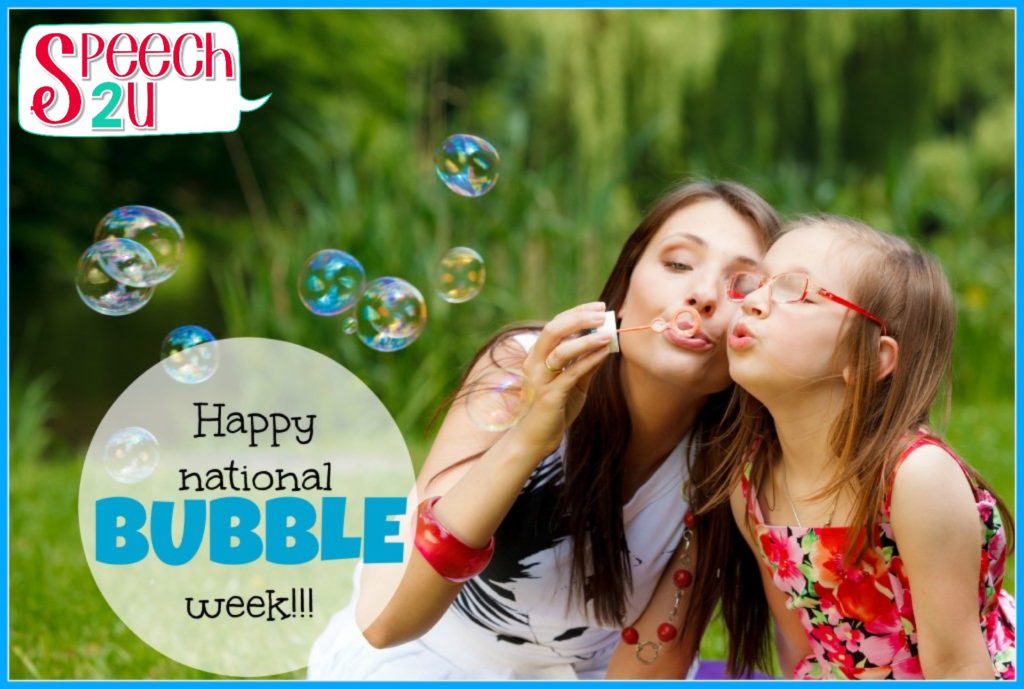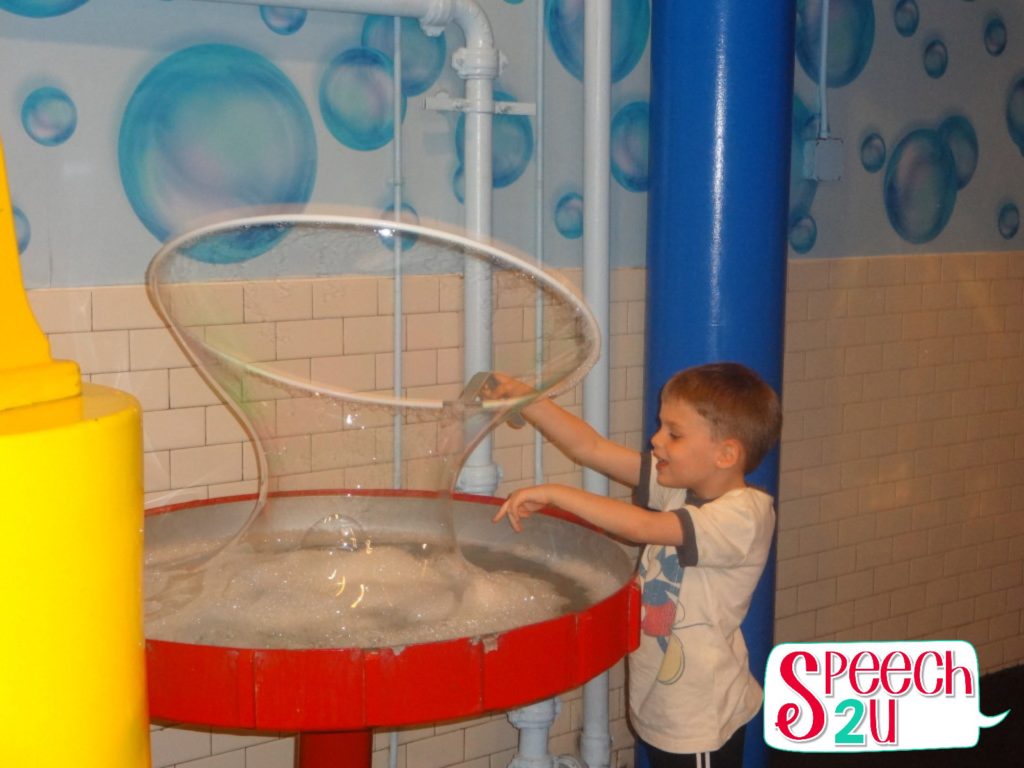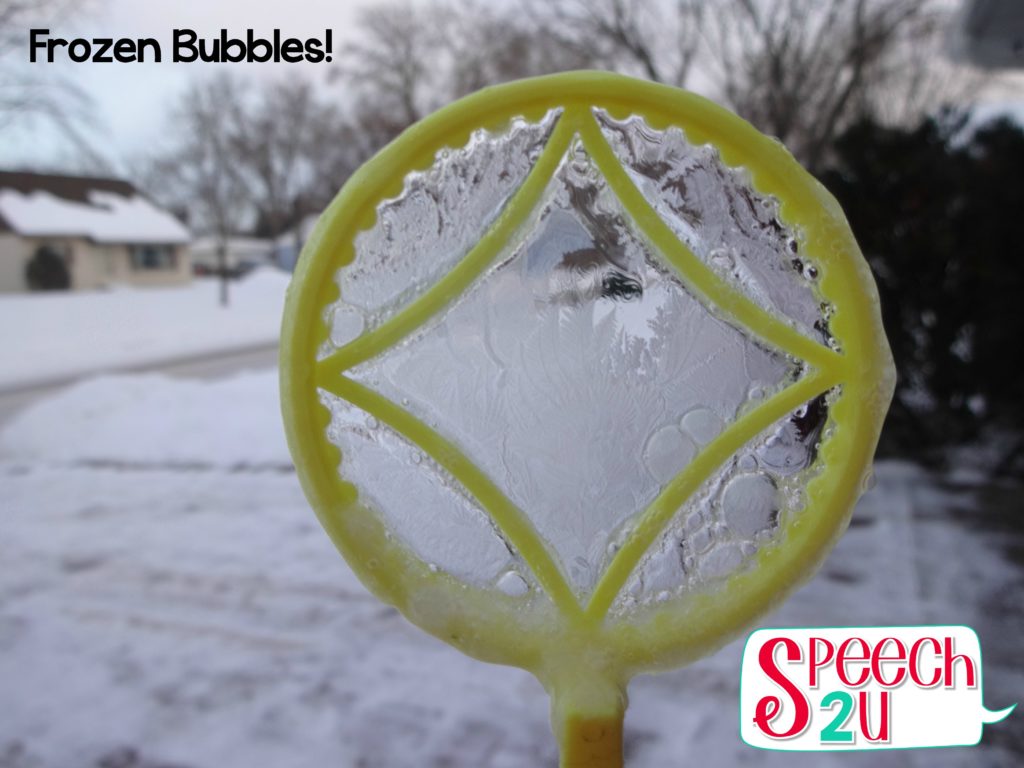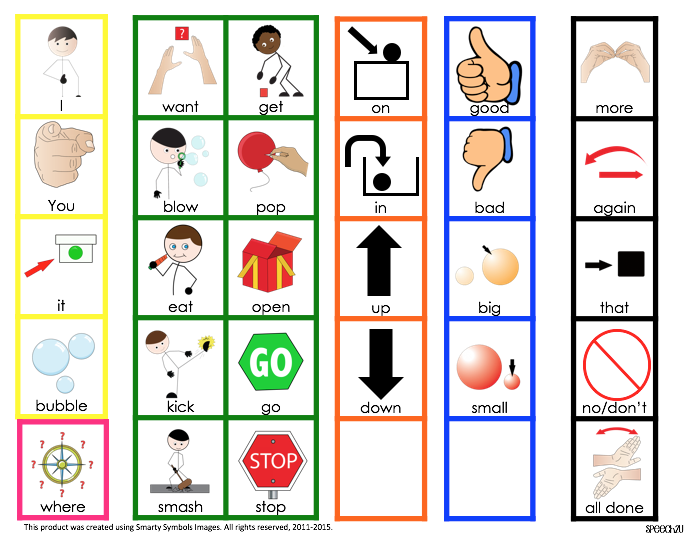Today I want to celebrate bubbles! I love crazy holidays or themed days. My favorite is International Talk Like a Pirate day (of course, right?) When I was working with middle and high school students, it was fun to talk about what the themed day as an ice breaker or to check for carryover of articulation skills. For instance, March 7th is National Crown roast of Pork day. Which is so random-and actually I don’t think any of my clients or students would know what it is. We talk about what we would do to celebrate this “holiday” and whether we would want to celebrate it. Check out this website for a comprehensive list of zany holidays.
Did you know that the first week of Spring is also national bubble week? There’s actually some controversy to this as some people say it is the second week in March. Who knows, I missed the first week in March so I’m just posting this on the first day of Spring. National bubble week is a holiday that was completely made up by a marketing firm about 5 years ago for Gazillon bubble company. Which is brilliant, who doesn’t love bubbles? Speaking of that, I think we need a treat your speech language pathologist to the spa day. I’m thinking right about NOW for most SLPs. It could probably be a month long holiday.

I’ve started receiving reports from professionals where they specifically state in the recommendations: I do not recommend the use of bubbles, straws, or whistles to treat this disorder. This isn’t a post on the controversy surrounding oral motor therapy. In defense of bubbles, they are really fun and motivating to use in therapy. I use them for early language, as a reinforcer, and to position the mouth for /u/ and /o/.
I’m kind of a bubble nerd. Years ago, my husband and I spent about an hour at the Orland Wonder Works museum in the giant bubble section. Last year, we were able to go back with my son. Giant bubbles are super fun!

I also froze bubbles last year during our Minnesota deep freeze a few years ago. You can check it out here.

Bubble Nerd Recommendations
The following section contains affiliate links. Affiliate links allow me to provide a link to where you can purchase an item. If you are thinking about purchasing something and use the link, I get a small (very small) percentage of the sale which goes towards the cost of hosting this blog.
I have very specific opinions about three things in therapy (okay, there may be a few more than these-but that’s a separate post).
- I like plastic animals that look realistic instead of cheesy so I buy Schleich animals. (1 a month for three years and I have a pretty awesome collection).
- I prefer 5 MM lamination vs. 3 MM but will make judgement calls based on the “worthiness” of the paper to be laminated since it is cheaper to laminate with 3 mm paper.
- I have a favorite brand of bubbles.
Money’s No Object Bubbles
My favorite brand of bubbles are the German brand, Pustefix. I love them because I’m able to blog bigger bubbles and if I catch them on the wand, they don’t pop as quickly as the bigger container of bubbles. I like that the container has the wand in the lid so I don’t need to dip my fingers in bubble broth to retrieve the wand. I’m fairly certain that these are the same bubbles that Talktools uses. The container costs around 6.00 and refills are in a small container for 6-8.00. So if you use bubbles every day-maybe this isn’t your choice.
Don’t Get My Carpet Dirty Bubbles
Bubble containers reduce the risk of spilling by having a covered top with a slot where you insert your bubble wand. I use these with my clients who need to hold the container themselves. I have a hard time though where the bubbles always get too foamy and we can’t blow them. I can only practice “uh-oh” or “oops” so many times before I risk a major meltdown.
Bubbles that could last the whole day


Sticky bubbles have some type of glue base in them which makes them last for a long time. These are really great to use with clients who have motor impairments and cannot quickly pop bubbles. They basically hang out in the air until you pop them. One time I was working in a clinic and we had used sticky bubbles the week before. I was walking down the hall and looked in an unused treatment space and saw a sticky bubble (from last week) still hanging in the air. These bubbles don’t really pop the same as traditional bubbles. You can also catch them on your fingers. If you decide to use them, check your hair before your next student or client, it’s not unusual to have a few sticking to your clothing or face.
Bubbles for the Clinician who can go outside
I purchased this bubble wand for my son and it makes GIGANTIC bubbles. Super fun to try to use outside but a little tricky to get to work correctly. I wouldn’t use them inside as when they pop, they leave a big, wet bubble mark on the floor. They are really fun for talking about sizes and motivating for clients. The one draw back of this design is that it is really easy to spill the bubble solution.
Bubbles in Therapy
I think we are all masters at using bubbles in therapy. Bubbles are one of my favorite tools for starting to pattern in three-four word phrases. We start by working on:
- I blow bubble
- You blow bubble
- I pop bubbles
- You pop bubbles
Once they can do that, then we start to work on adding concepts such as up/down, big/little, or fast/slow. (Ex. You blow big bubble, or I blow bubble up.)
I got the idea to alternate the actions for bubbles from Laura Mize. I created a topic board so that I can have a visual for my clients to reference.

I start by modeling how to use the board and then fade cues for my clients to verbally produce the sentences. I’m offering this as a freebie to subscribers next month, so if you are interested and haven’t signed up for my email list, make sure to do sign up so that you get access to all of these freebies!
One of my colleagues, Sue, has created an awesome bubble language assessment. Perfect for assessing younger children who don’t respond to standardized assessments!
I thought we could celebrate National bubble Month. I’m going to give away my favorite bubble tube to a lucky reader.







My favorite thing to target with bubbles is: requesting, commenting, exclamatory remarks, vocabulary and utterance expansion, turn taking.
verb tenses – I popped it – you popped it – I want to pop it – I will pop it – it popped!
I use bubbles as a reinforcement, for requesting, and to teach basic cvc words! Bubbles have proven to be the most motivating item for my non-verbal and limitedly verbal intellectually delayed students as well as my most challenging behavioral students. I use them to teach words like “more” “pop” “I want”.
Expanding utterances in general. Kids just love bubbles!
Bubbles are a great motivator when I am introducing communication boards to my InD and Autistic kiddos. Great for expanding utterances…I want, you want …..
Thanks for great post, especially being overwhelmed with personal emergencies and pneumonia!
Love using bubbles in therapy to expand utterances or make requests. Thanks for all the fresh ideas!! 🙂
Most recently I used bubbles with a student who just started using AAC. The word we were focusing on was “help”. Bubbles were very motivating!
I love using them for joint attention, requesting, and lip rounding. My favorite brand of bubbles come from Gymboree (also expensive, but definitely worth the money!)
I use bubbles when I introduce a core word board — I can highlight/mark specific vocabulary (help, want, again, you, I, stop, all done, more) so that the student can focus just on the word/s we are using that day. It even works in small groups! Last month, I had a core board beginner, an advanced device user, and 2 verbal kids with me. The beginner was working on WANT, HELP, and ALL DONE. The advanced user was working on building sentences: I want (to) do more, I want help, You do more, I do it. The verbal students were directing me and describing: make them go up, I want them here, lots of bubbles, big bubble, little bubbles, etc. I think I could have kept them engaged for over an hour!
I like to use them to get present progressives- blowing, catching, popping, watching.
I use bubbles for expressive language with my nonverbal kids.
I like to use bubbles for /p/ /o/ /u/. following directions, etc. THanks so much for sharing this info. It is frustrating when the bubbles don’t blow or pop too soon!
I love bubbles! They are my go-to activity when I’m working with little ones (and some bigger ones) who are still gaining joint attention and engagement. I also think bubbles are fantastic for exclamatory comments and for directing actions.
I like to use bubbles with my nonverbal autistic students as one of our first communication boards. All kids seem to love bubbles so eliciting first requests and comments is easy.
There used to be bubbles that were flavored for those little ones who insist on trying to eat the bubbles!
Jane Kitson (Atlanta area Mother Goose) has a great bubble song that I use when I use bubbles with my littles. I use it, along with the bubbles, to elicit bilabials.